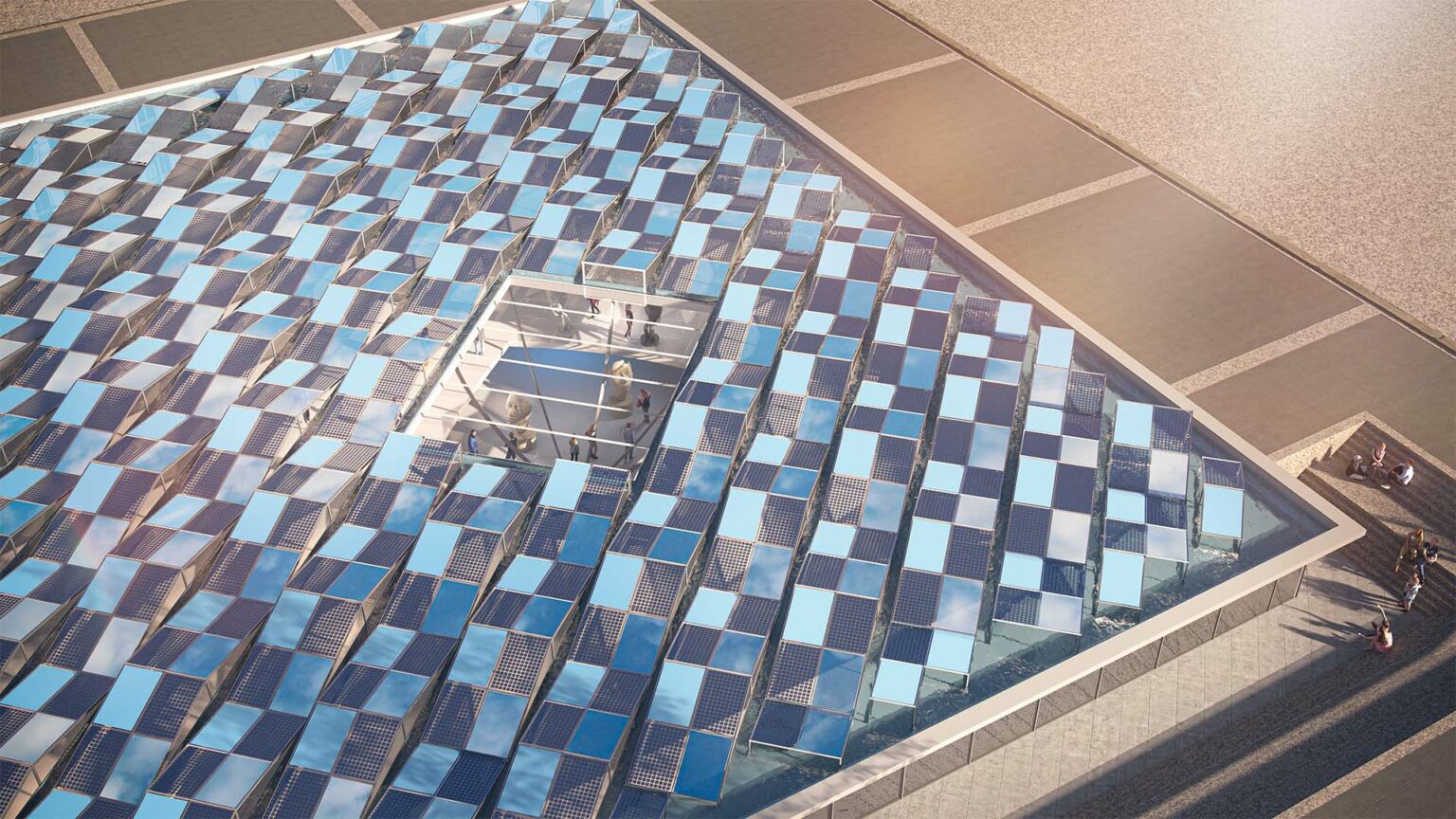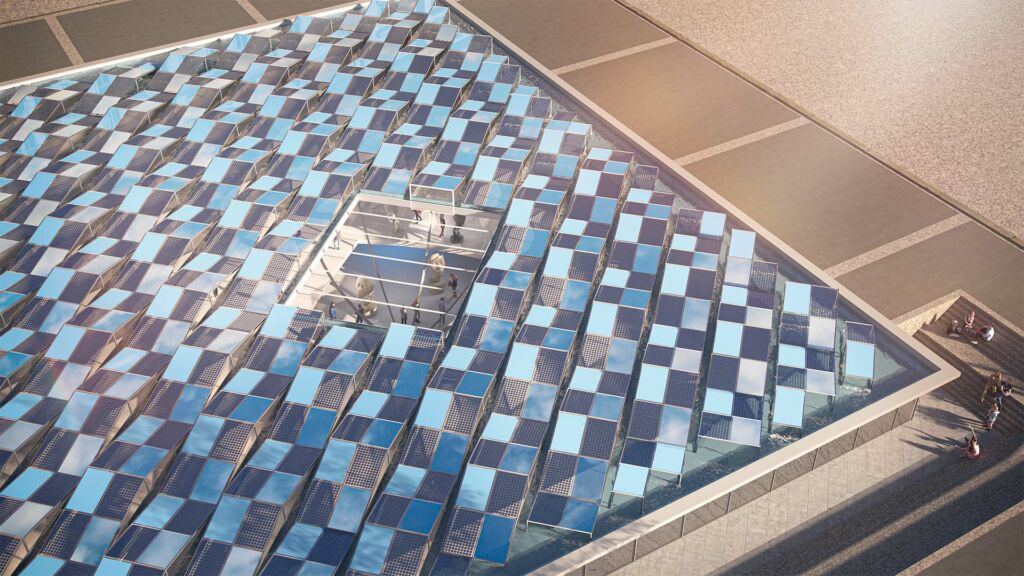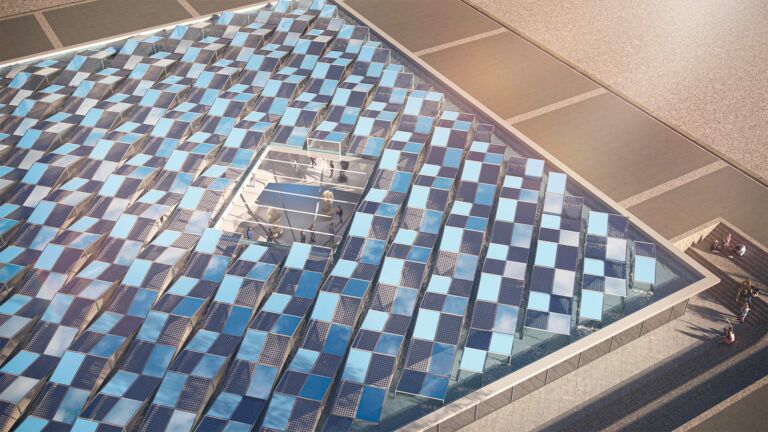
URbAN WAVES – Architectural solar glass in an urban setting
In their proposal for a ‘solar esplanade’, Sunsoak’s architects examined the feasibility of building true solar farms in an urban environment. With that challenge in mind, how big should an urban solar farm be, what technologies should it incorporate and how should it be deployed architecturally?

In the URbAN WAVES concept, a museum and convention centre are built underneath a public space in order to preserve the form and shape of that space. The challenge lies in making it accessible and ensuring sufficient light inside the facility. In this kind of complex, it is the roof which is the visible part, which forms its identity. Access to the roof and the glass canopy over it can be prevented by a recessed area running all around the building, in the form of steps punctuating the esplanade. In other words, this is a great opportunity to incorporate an elegant, large-scale solar farm, featuring ethereal shimmering colours created by a combination of BIPV technologies. We will use three different products from the Active Glass range to create a play of colours and reflections, like one might see rippling on the surface of a lake:
- Vision Square: single translucent glazing fitted with visible solar cells or pixels;
- Stopray Active: highly reflective active glass in which we’ll see reflections of the sky and city;
- Lacobel T Active blue: slightly matt active glass with a smooth, light blue coating, adding a second blue tone to the ensemble.

In that spirit, we designed a project taking the form of a floating plane, punctuated by waves of solar materials and surmounting a lake that will add its brilliance to the multiple reverberations from the glazings radiating out in all directions. The result: an architecturally integrated solar project that will ultimately become an urban design object. It will be right in the middle of the esplanade – replacing the foundation one might typically see – and will act like a mirror, or even a mirage when approaching the museum. Above all, it will be a signal, a totem of the energy transition currently in progress.
The project to upscale renewable energy installations in urban areas is directly linked to the European climate strategy and its 2050 targets under the European Green Deal, a resolution adopted by the European Parliament in January 2020.

